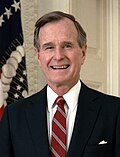 | |
| Long title | An Act to establish the Spark M. Matsunaga Hydrogen Research, Development, and Demonstration Program Act of 1990. |
|---|---|
| Acronyms (colloquial) | HRDDA |
| Nicknames | Hydrogen Research, Development, and Demonstration Act of 1990 |
| Enacted by | the 101st United States Congress |
| Effective | November 15, 1990 |
| Citations | |
| Public law | Pub. L. 101–566 |
| Statutes at Large | 104 Stat. 2797 |
| Codification | |
| Titles amended | 42 U.S.C.: Public Health and Social Welfare |
| U.S.C. sections created | 42 U.S.C. ch. 128 § 12401 et seq. |
| Legislative history | |
| |
Spark M. Matsunaga Hydrogen Research, Development, and Demonstration Act of 1990 is a United States statute establishing a comprehensive five year management program for the domestic distribution, production, and utilization of the lighter than air and diatomic molecule known as hydrogen. The Act of Congress endorsed the development and research of renewable energy and renewable resources for hydrogen production. The United States public law standardized the energy carrier as a critical technology declaring the period 1 element for the expansion of a hydrogen economy within the continental United States.
Contents
- Declaration of the Act
- Hydrogen Future Act of 1996
- See also
- References
- Further reading
- External links
The United States Senate bill 639 was a supersede to the United States House of Representatives bills H.R. 2793 and H.R. 4521. [1] [2] The Bush Administration bolstered support for the U.S. House bill H.R. 2793 providing initiatives for industry standards as an economic fuel with respect to the hydrogen highway and the hydrogen infrastructure. [3]

